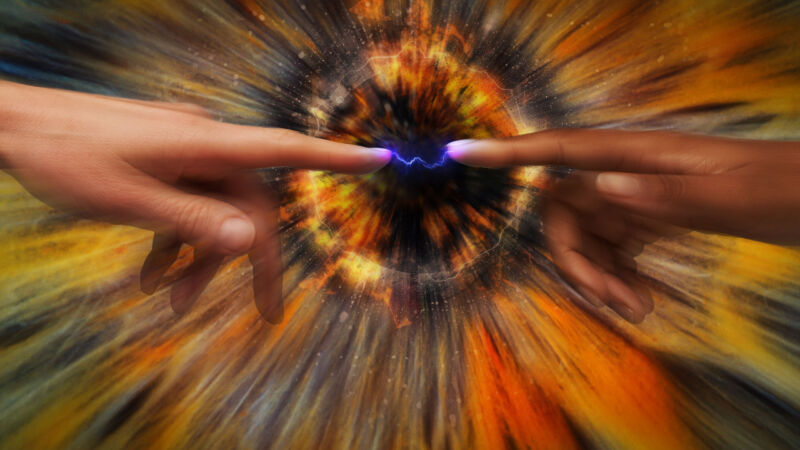
Aurich Lawson | Getty Images
As a scientist heavily engaged in science communication, I’ve seen it all.
People have come to my public talks to argue with me that the Big Bang never happened. People have sent me handwritten letters explaining how dark matter means that ghosts are real. People have asked me for my scientific opinion about homeopathy—and scoffed when they didn’t like my answer. People have told me, to my face, that what they just learned on a TV show proves that aliens built the pyramids and that I didn’t understand the science.
People have left comments on my YouTube videos saying… well, let’s not even go there.
I encounter pseudoscience everywhere I go. And I have to admit, it can be frustrating. But in all my years of working with the public, I’ve found a potential strategy. And that strategy doesn’t involve confronting pseudoscience head-on but rather empathizing with why people have pseudoscientific beliefs and finding ways to get them to understand and appreciate the scientific method.
A working definition of pseudoscience
To get things started, let’s figure out what we mean by “pseudoscience.” Unfortunately, there’s no universally agreed-upon definition for us to turn to, and the lines between science and pseudoscience can get a little blurry. For example, some people accuse super-theoretical investigations like string theory of veering into pseudoscience (I disagree, but that’s another story).
And then there’s science that doesn’t live up to expectations. There are some bad scientists who create junk, lazy scientists who don’t do their homework, fraudulent scientists who tune their findings for a buck, and all manner of not-quite-good-enough scientific output. All of these blur the lines, too, even within disciplines that generally sit on firm foundations.
So, figuring out what we can classify as pseudoscience is complicated. Over the years, I’ve developed my working definition of it. It’s not perfect, but I’ve found it useful as a handy way to at least flag a particular practice or line of thinking as potentially pseudoscientific.
The word pseudoscience means “false science,” and that’s where my definition starts. Pseudoscience is a practice, a mode of investigation, that looks like science but misses the point. Or, as I like to phrase it, pseudoscience has the skin of science but misses its soul.
Science, skin, and soul
The skin of science is visible to non-scientists; it’s what science looks like from the outside. That skin usually involves some combination of advanced jargon that’s generally indecipherable, the wielding of sophisticated mathematical tools for describing nature, and, of course, the fancy technical gear for making measurements and observations.
But these are just the tools of science; they aren’t what makes science so uniquely powerful. That’s the scientific method. We’ve all learned the basics of the scientific method (make a hypothesis, test it, repeat), but it’s only in scientific training that you can acquire the skills necessary to put that method into practice. This—the scientific method and the skills to put it to use—is the real soul of science.
It involves skills like rigor, where we take our own statements seriously and follow them to their full logical conclusions. Or humility, where we learn to accept that any statement can be proven wrong at any time. There’s also fundamental skepticism, in that we allow the evidence to dictate our beliefs. Science is characterized by a spirit of openness, by requiring that methods and techniques be shared and publicized so that others can critique and extend them, and connectedness, which is a sense that statements we make must connect with the broader collection of scientific knowledge. Lastly, science persists in a constant state of evolution, where we always refine our beliefs and statements given new evidence or insights.
These qualities together make the scientific method work on a day-to-day basis. And while any individual scientist will fall short at one or more of these qualities for at least some—or, sadly, the entirety—of their careers, the practice of science is to always strive for these noble goals.

